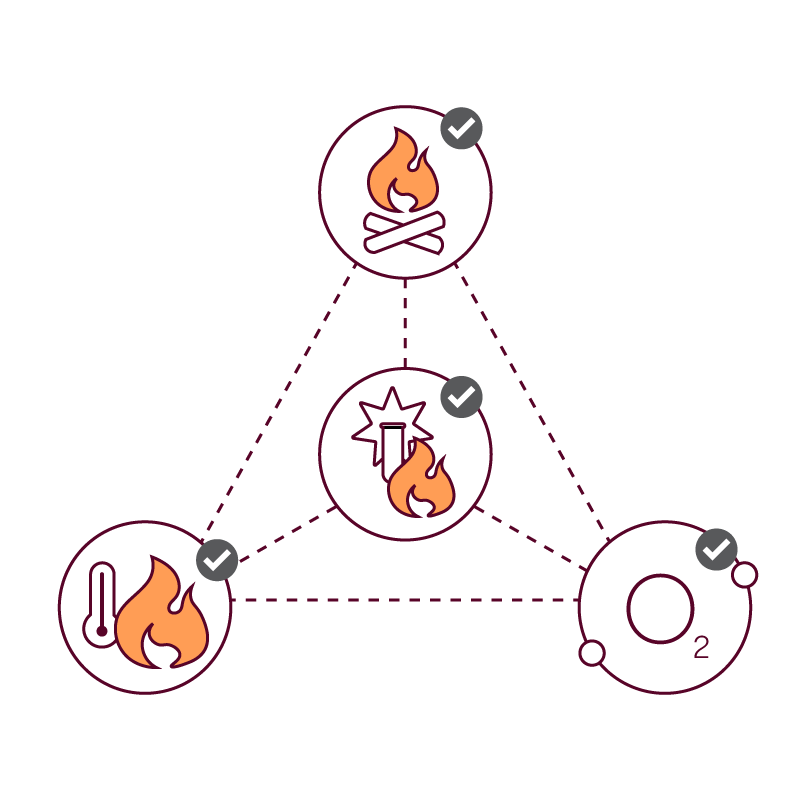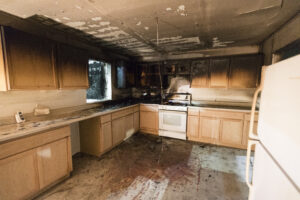Section 2a of 4
On this page, you’ll obtain information to understand what fire is and the evidence it may leave behind.
At the Fire Safety Research Institute, part of UL Research Institutes, fire protection engineers and safety scientists study fire in a very controlled and scientific way. Do not attempt to recreate these tests yourself: instead, this pathway will take you through these experiments virtually. Your teachers can provide you with similar experiences that allow you to explore fire in a safe setting. If you are interested in performing similar tests yourself, consider pursuing a career as a safety scientist!
Let’s take a close look at the vocabulary that helps us communicate what we understand about fire.
Matter can exist as solid, liquid, gas, or plasma. These are known as phases of matter. When temperature changes, matter can change from one phase to another.
Only fuel in the gas phase of matter can burn. Solids and liquid fuels must be changed to gas in order to burn.
A chemical reaction is a process where substances are converted to different substances with new properties.
After fire, you notice black char. This new substance is a product of the chemical reaction of fire. Char indicates something was on fire.
The release of heat and light are signsthat a chemical reaction has occurred. Other signs that a chemical reaction has occurred are:
This video shows an infrared view of the room. It allows us to visualize thermal energy. Red indicates hotter areas.
Look closely at the white box showing a lampshade as it heats up. Is there evidence that it is getting hotter and releasing gases? What do you notice ignites?
Pyrolysis is a chemical reaction where heat breaks down solids into new substances like soot, vapors, and gases that can burn. Can you observe evidence that the lampshade experienced pyrolysis.
With proper adult supervision, you can complete this classroom investigation: Fire Triangle Investigation Guide.
Fire professionals often refer to the components of fire as the fire triangle. Fire exists only when all three elements of the fire triangle work together: heat, fuel and oxygen.
Another word for fire is combustion. Combustion is a chemical chain reaction where fuel gases mix with oxygen and are ignited by heat. This results in flames, and the continuous production of more fuel (chain reaction).
We refer to this chemical reaction involving heat, oxygen, and fuel as the fire tetrahedron.
Fire needs heat, oxygen, and fuel to combust. If any of these components are removed, the chemical chain reaction cannot continue. The fire is extinguished.

Identify areas where all the components of fire were present. The chemical reaction for fire results in products like soot, char, and ash. There may be greater amounts of these products closer to the origin.

Entire kitchen scene.